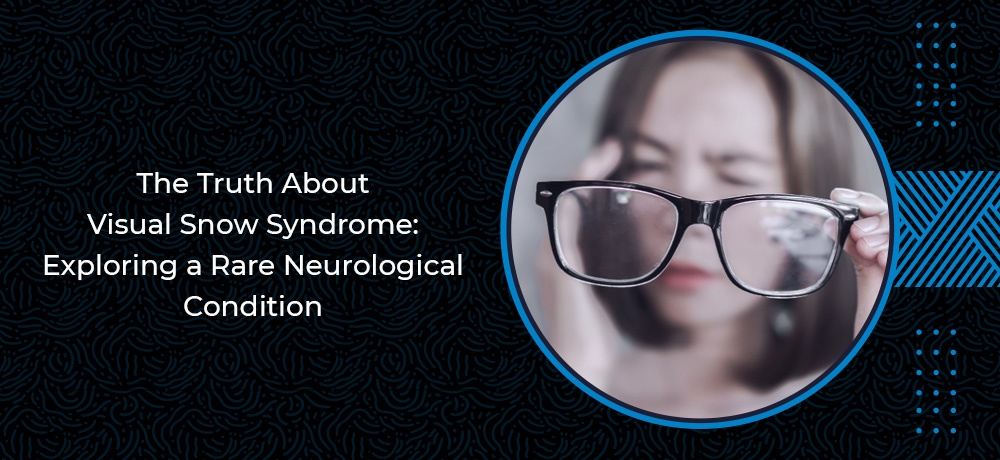The Truth About Visual Snow Syndrome: Exploring a Rare Neurological Condition

In the vast realm of eye health and visual perception, there are conditions that extend beyond common refractive errors or age-related vision changes. Visual Snow Syndrome (VSS) is a remarkable yet rare neurological condition that warrants attention. At Doctors Eyecare Wetaskiwin, we strive to shed light on this intriguing phenomenon to help patients understand its impact and seek appropriate care. Join us on this journey as we explore Visual Snow Syndrome, its misconceptions, and effective ways to manage its symptoms.
What is Visual Snow Syndrome?
Visual Snow Syndrome, also known as visual snow, is a neurological condition characterized by persistent visual disturbances. Individuals with VSS perceive their surroundings as if they are covered in a fine, grainy overlay reminiscent of television static. Interestingly, this condition persists even when one closes their eyes. In addition to visual snow, patients may experience symptoms such as light sensitivity and floaters.
Debunking Misconceptions about Visual Snow Syndrome
1: Visual Snow Syndrome appears as bright or dark dots
Contrary to popular belief, Visual Snow Syndrome does not manifest as individual dots of varying colors. Instead, it causes small, scattered dots that are uniform in size and do not form clumps. This distinction is crucial to accurately identify and understand the condition.
2: Visual Snow Syndrome has a fixed intensity level
The severity of Visual Snow Syndrome can vary significantly from person to person. Some individuals may experience mild visual disturbances, while others may face extreme intensity levels. Understanding this variability helps patients and healthcare professionals address symptoms on an individual basis and tailor treatment accordingly.
3: Visual Snow Syndrome and visual noise are the same
Visual noise, characterized by a pixelated gray appearance in a dark room, may initially seem similar to Visual Snow Syndrome. However, visual noise is exclusively visible in the absence of light, whereas Visual Snow Syndrome affects a person’s entire field of vision. Recognizing this distinction is essential to proper diagnosis and management.
Managing Visual Snow Syndrome
While there is currently no known cure for Visual Snow Syndrome, there are strategies to help manage its symptoms effectively. Consider the following tips:
Opt for soft lighting: Replace bright bulbs with softer lighting options in your home to minimize visual disturbances.
Rose-tinted eyeglasses: Wearing glasses with a rose-tinted lens can help reduce the intensity of visual symptoms experienced by individuals with Visual Snow Syndrome.
Choose neutral-colored paper: When reading or writing, opt for neutral-colored paper, such as a yellow-tinted pad, to mitigate visual discomfort caused by bright white paper.
Use a bookmark: Utilize a bookmark or other guide to separate lines of text on a page, facilitating easier reading and reducing visual strain.
Address headache symptoms promptly: Take pain relievers or employ other headache remedies as soon as symptoms arise to manage discomfort associated with Visual Snow Syndrome.
Takeaway
While certain anticonvulsant and antidepressant medications are available for treatment, it’s important to note that they do not offer a complete cure and may come with side effects. Consulting with both an eye doctor and neurologist is crucial to managing Visual Snow Syndrome effectively.
At Doctors Eyecare Wetaskiwin, we understand the impact that Visual Snow Syndrome can have on your visual experience. By unraveling the mysteries surrounding this rare neurological condition, we aim to empower patients with the knowledge and provide the highest quality care. If you or a loved one are experiencing symptoms related to Visual Snow Syndrome, reach out to our experienced team of eye care professionals. Together, we can navigate the challenges of this condition and optimize your visual well-being. Contact us today to schedule a consultation and embark on a journey toward a clearer vision. Remember, at Doctors Eyecare Wetaskiwin, your vision matters to us.
Get in touch with us today!
To learn more about the services we offer, please click here. To get in touch with us, please click here or give us a call at
(780) 361-2020.